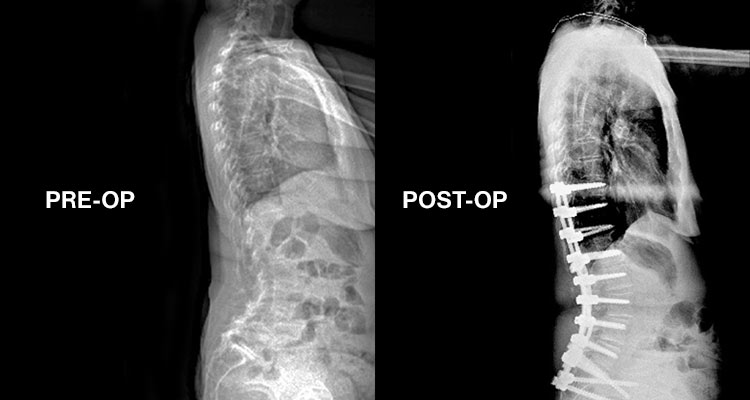
Patient Overcomes Fear of Back Surgery and Makes Full Recovery
Maxine Heumann, 72, endured many years of pain in her back and legs and was very nervous about the prospect of back surgery. She knew people who had undergone the procedure and, even after recuperating and doing physical therapy, were still in constant pain. “I was miserable, but I was very afraid of back surgery.” Then she began tilting to the left and was unable to stand straight. “It got to the point that it was hard for me to put pants on because one hip was so much higher than the other,” she says. “Leggings were a big friend.” But still, she resisted surgery.
Eventually, Maxine’s youngest daughter pointed out that Maxine kept tilting more and more. “Soon your head is going to be down at your waist,” the daughter said. “You have to do something.”
The argument worked. Maxine went to see a doctor at another New York City hospital, who assessed her and took X-rays and magnetic resonance imaging. Even so, Maxine was not sure he was the right person to operate on her. A friend recommended a doctor at The Mount Sinai Hospital, who sent her to James D. Lin, MD, MS. “As soon as my husband and I met Dr. Lin, it felt right. He just looked at me and said, ‘I can take care of this.’ I trusted him right away.”
Dr. Lin looked over the imaging tests, then ordered some additional scans. He diagnosed severe sciatica (leg pain from pinched nerves) due to spinal stenosis, as well as degenerative scoliosis (curvature of the spine). Dr. Lin’s recommendation: surgery. Reluctantly, Maxine agreed.

In the weeks before the procedure, Maxine focused on strengthening her arms and legs and increasing her endurance. “I was on the elliptical every day for 40 minutes and lifted weights for my arms.” She wanted to be as strong as possible going into the surgery. Six weeks before surgery, Dr. Lin put Maxine on teriparatide (Forteo®), a medication to strengthen her bones; she continued taking it for a full year.
On March 11, 2022, Dr. Lin performed surgery. “We did a laminectomy, which is basically a surgery that creates more space for the nerves that are being pinched, and then a posterior spinal fusion, where we put screws and rods in to realign and stabilize her spine.”
The operation worked. “After the surgery, my spine was straight again, and the pain decreased a lot. I didn’t realize how much pain I was in until it went away,” Maxine says. “I was pain-free in about four weeks.” Maxine took a few steps the day after the procedure, then continued to walk daily.
Her presurgery strength-building regimen was helpful, as Maxine had hoped. “Typically for a procedure like this, most patients stay in the hospital for four days,” Dr. Lin says. “But Maxine did really great.” She was discharged on day three. Maxine did two weeks of physical therapy, with the therapist coming to her home. “They told me to walk every half hour for five minutes—and I did,” she explains. She also went up and down a flight of stairs six or seven times a day. “My husband is a good taskmaster.”
For a while, she had some restrictions. “Dr. Lin told me I couldn't twist at all, which is very difficult. They taught me how to get in and out of bed without twisting by rolling like a log.” Maxine wore a back brace, used a grabber and a raised toilet seat, and did a lot of squatting instead of bending over; the brace kept her from making any unsafe moves. After about two months, Maxine was back to full mobility, though she continued to wear the brace for another five months. “These days, I can do anything–even walk on a glacier in Alaska.” Maxine walks four or five miles a day, three or four times a week, depending on the weather. She also uses the elliptical and treadmill in her basement.
“Dr. Lin was fabulous,” Maxine says, adding that he always makes time to answer her questions, and never looks at his watch or rushes out of the room or off the phone. “I would recommend him to anyone.”
Looking back, Maxine is glad she had the procedure. “If I had to make one recommendation for someone considering spine surgery, I would say you should build up your strength before the procedure. It makes it easier to regain your strength after. And don’t be afraid to have the surgery. It can really improve your life.”